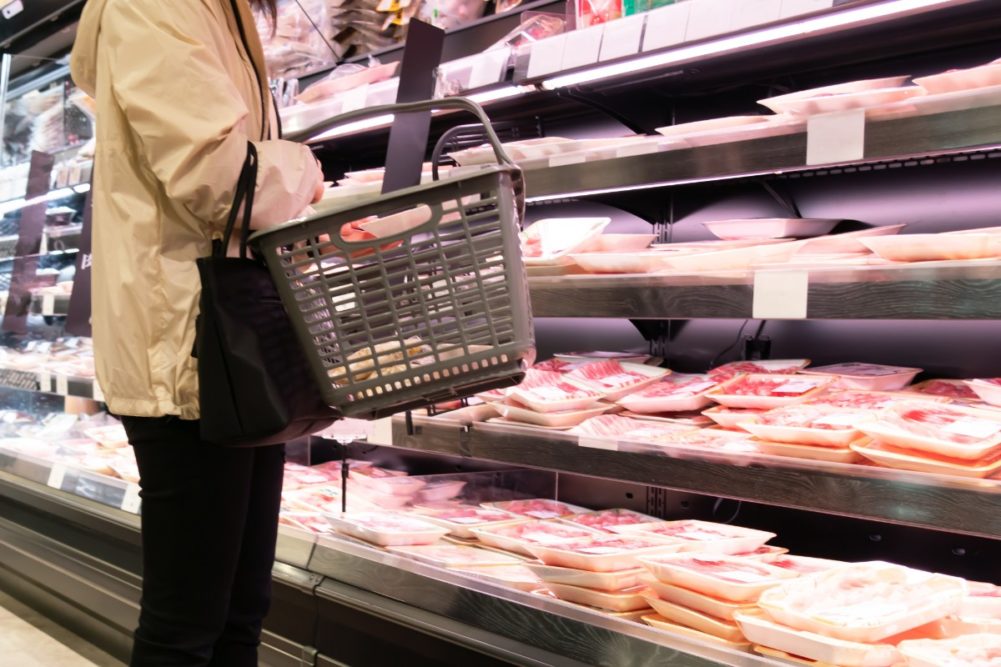WASHINGTON - With consumers seeing higher food prices around the grocery store, particularly with beef, pork and poultry, the Biden Administration released a statement on the White House Briefing Room Blog laying out its case for these current economic conditions.
Three policy advisors in the National Economic Council stated in the post that consumer demand played a role in the high prices but also argued that price was driven by a lack of competition in meat processing.
“Just four large conglomerates control the majority of the market for each of these three products, and the data show that these companies have been raising prices while generating record profits during the pandemic,” the White House briefing said.
According to US Department of Agriculture (USDA) data from the post, four companies control approximately 55-85% of the meat and poultry market.
The White House acknowledged that since December 2020, beef, pork and poultry account for half of the price increases in food at home for consumers. They stated that prices rose 14% on beef, 12.1% on pork and 6.6% on poultry.
“The meat processors are generating record profits during the pandemic, at the expense of consumers, farmers, and ranchers,” the statement said. “The dynamic of a hyper-consolidated pinch point in the supply chain raises real questions about pandemic profiteering. During the pandemic, wholesale prices for beef rose much faster than input prices for cattle. That means that the prices the processors pay to ranchers aren’t increasing, but the prices collected by processors from retailers are going up.”
The USDA and the Biden Administration said they are addressing these issues by cracking down on illegal price-fixing and bringing more transparency to the meat processing industry.
The agency also plans to invest $1.4 billion in pandemic assistance to small business and workers hurt by the virus. In July, the USDA announced a $500 million plan to expand US meat processing capacity.
The Emergency Assistance for Livestock, Honeybees and Farm-Raised Fish Program (ELAP) from the USDA will be expanded to include the cost of transporting feed and delivering much-needed relief to affected livestock producers.
In response, the North American Meat Institute (NAMI) disagreed with the White House assessment and referred to the USDA’s assessments about the meat and poultry industry.
“As with almost every industry, meat and poultry packers and processors of all sizes have been, and continue to be, affected by the global pandemic and the inflationary trends that challenge the US economy,” said Mark Dopp, chief operating officer with NAMI. “American consumers of most goods and services are seeing higher costs, largely due to a persistent and widespread labor shortage. The meat and poultry industry is no different. Issuing inflammatory statements that ignore the fundamentals of how supply and demand affects markets accomplishes nothing. Meat and poultry markets are competitive and dynamic with no one sector of the industry consistently dominating the market at the expense of another.”
Tyson Foods Inc., also published a statement saying it “categorically rejects” the conclusions by the White House.
“Multiple, unprecedented market shocks, including a global pandemic and severe weather conditions, led to an unexpected and drastic drop in meat processors’ abilities to operate at full capacity,” the company wrote. “This led to an oversupply of live cattle and an undersupply of beef, while demand for beef products was at an all-time high. So, as a result, the price for cattle fell, while the price for beef rose. Today, prices paid to cattle producers are rising. Labor shortages – the inability of the industry to adequately staff its plants – has exacerbated the situation. Labor shortages are also affecting the nation’s pork and poultry supply.”
For more industry news, check out our meat & poultry page.

